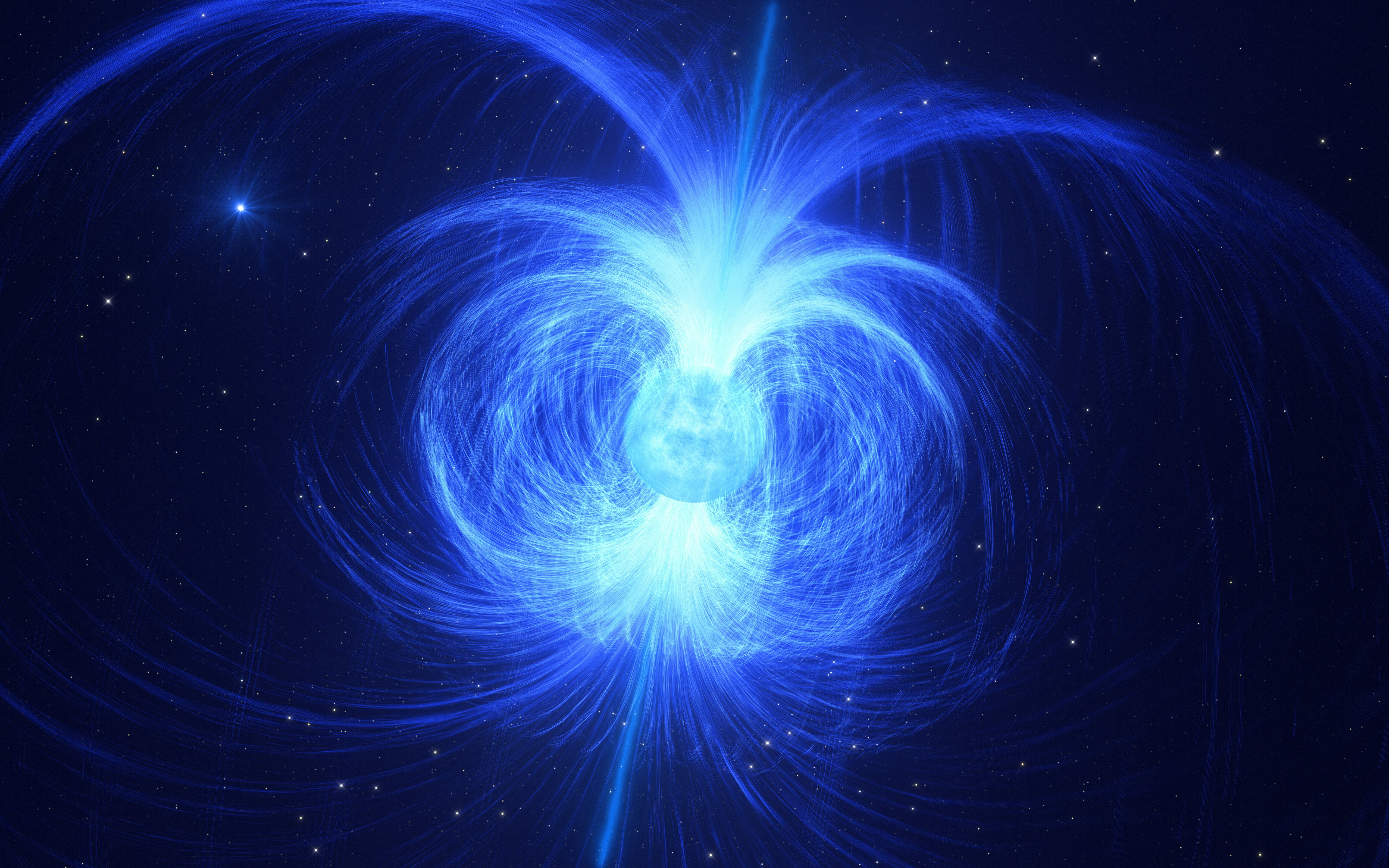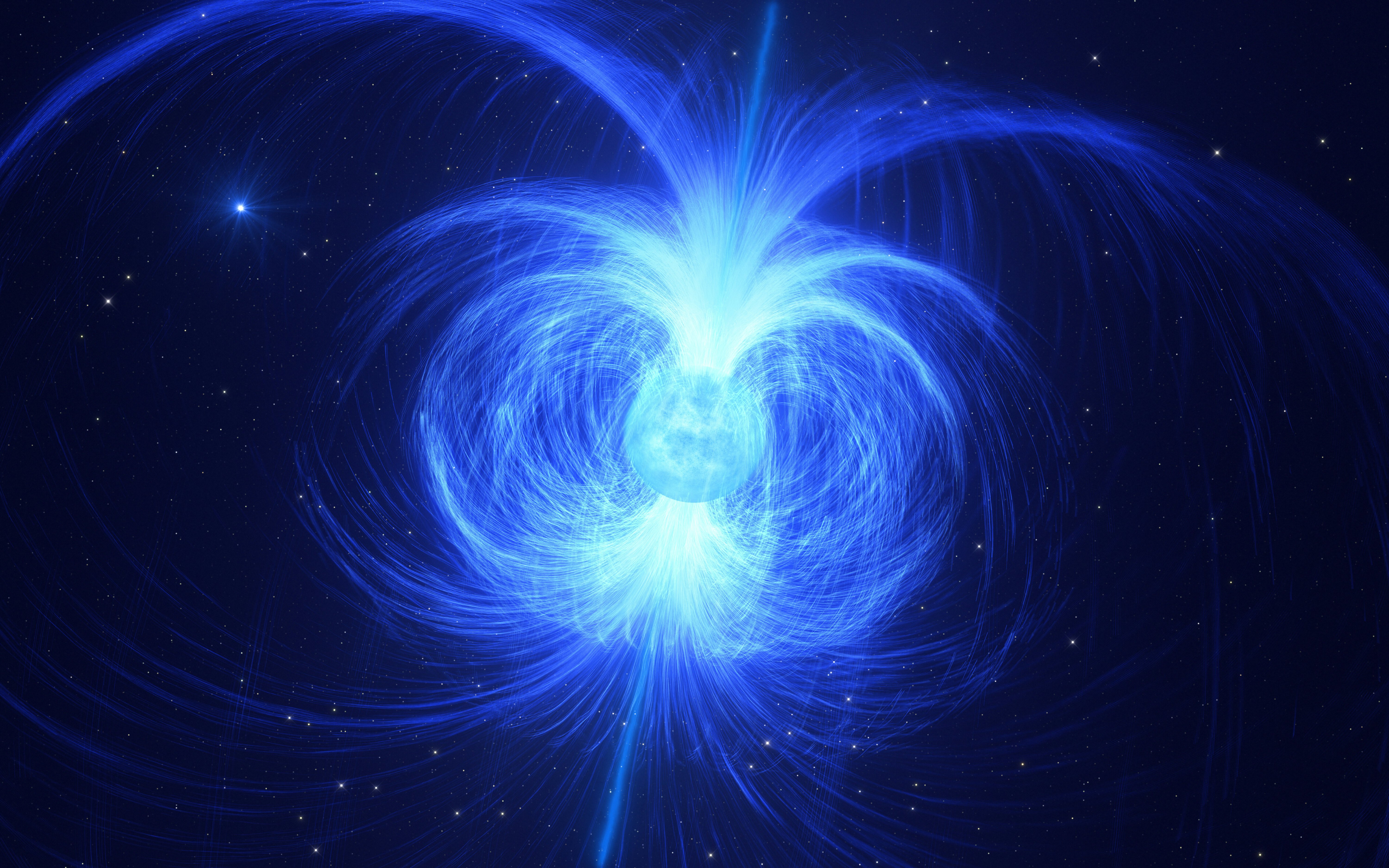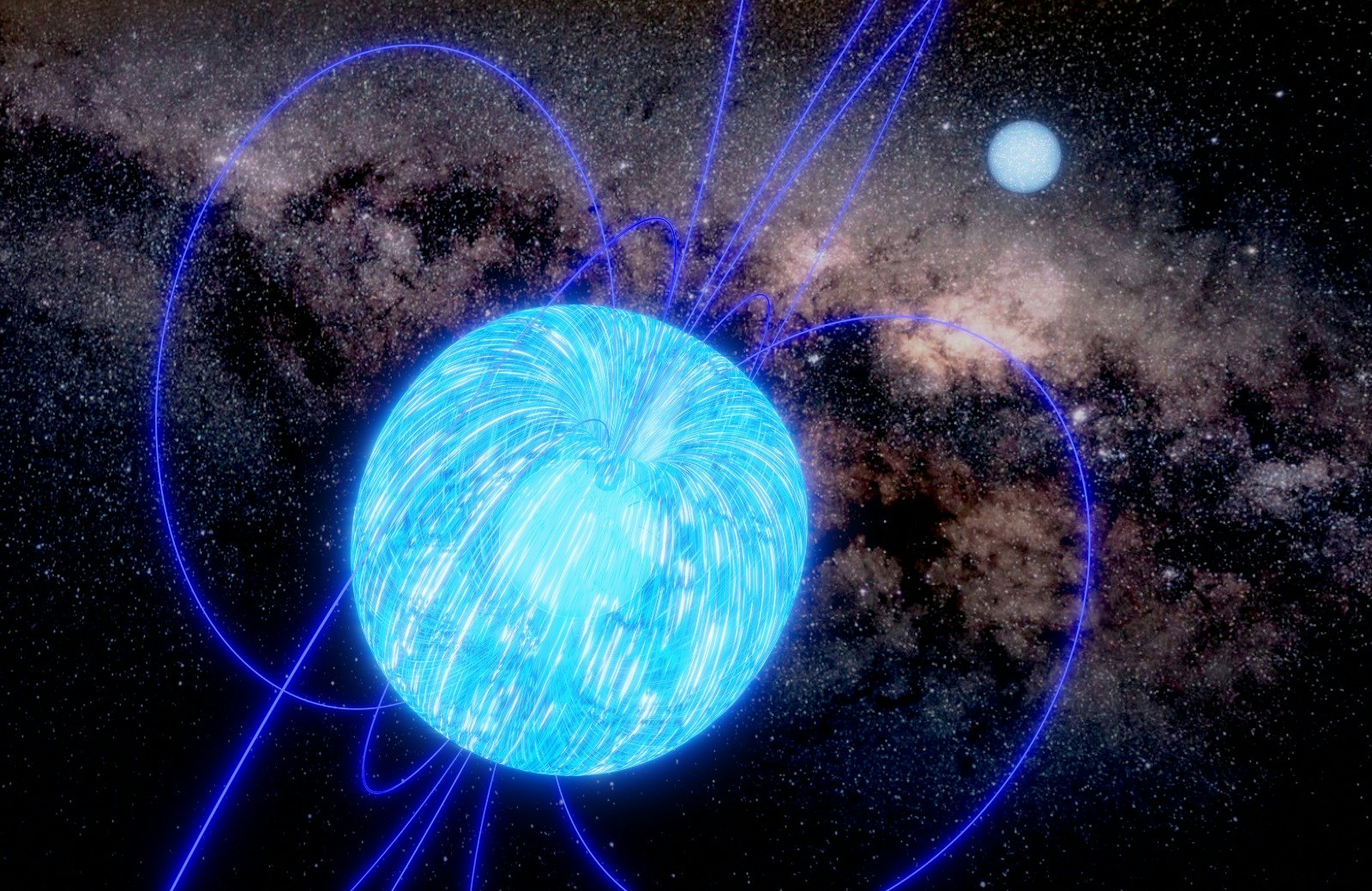
HD 41566 is a deeply weird star. It’s the exposed helium core of what was once a much larger, more massive star, and it glows with the light of the electrically-charged helium it’s blasting out into space.
That’s not actually the weird part, though. Many of the universe’s most massive stars will go through a similar phase — they’ll shed their shrouds of hydrogen and spew out powerful stellar winds, laden with ionized helium. These objects are called Wolf-Rayet stars, and they’re rare but fairly well-known.
But HD 41566 has been puzzling astronomers for more than a century because it’s much too small to be a normal Wolf-Rayet star. Based on their recent observations and simulations, University of Amsterdam astronomer Tomer Shenar and his colleagues suggest a bizarre backstory for this weird star: a collision between two smaller stars, giving rise to the powerful magnetic field. And eventually, the story ends with HD 41566 collapsing into a dense ball of highly-magnetized neutrons called a magnetar.
Shenar and his colleagues published their research in the journal Science.
The (Relatively) Little Star that Could

Shenar and his colleagues recently used an instrument on the Canada-France-Hawaii Telescope to study the magnetic field of HD 41566. Based on the spectrum of light the star emits (so much ionized helium!) it’s considered a Wolf-Rayet star, but astronomers have never been able to explain how such a small star could muster the powerful stellar winds that stir up all that ionized helium.
“Wolf-Rayet stars typically have masses larger than about eight solar masses in our Galaxy,” Shenar tells Inverse. “The existence of a four solar mass Wolf-Rayet star defied our current understanding of these objects.” The mystery captivated Shenar for years, and the answer turned out to be even stranger than he expected.
For one thing, HD 41566 is even smaller than astronomers had realized; it’s only about twice the mass of our Sun. That’s big enough to end its life in a supernova, but not big enough to produce the stellar winds of a Wolf-Rayet star. But the star turns out to have a magnetic field that helps it punch way above its weight.
The star’s surface has a magnetic field about 100,000 times stronger than Earth’s: about 43,000 gauss. (To put that in context, the magnets that make MRI machines work range from 20,000 to 70,000 gauss.) It’s the most magnetic massive star astronomers have ever found, and that magnetic field is why it looks like a Wolf-Rayet star.
Most Wolf-Rayet stars shine in the specific wavelengths of light given off by ionized helium, and that’s because their powerful stellar winds are blowing electrically-charged helium outward from the star. But HD 41566 doesn’t actually have those winds. What it does have are huge streams of helium ions, trapped in the lines of that monstrous magnetic field.
“Strong magnetic fields force the gaseous material of the star to stream along the magnetic field lines and collide at the magnetic equator. This gives rise to really dense and opaque layers of material around the star, that wouldn't be there without the magnetic field,” says Shenar. So, in fact, the spectrum of HD 45166 is caused not by an outflow, but by this gaseous material trapped in the magnetic field of the star.”
HD 41566 is a new class of star, according to Shenar and his colleagues: one that emits light like a Wolf-Rayet star, but because of a powerful magnetic field wrapping it in ionized helium, rather than strong stellar winds blasting ionized helium outward.
A Wild Origin Story and a Dramatic Ending

Shenar and his colleagues suggest that HD 41566 began its life as two stars, whirling around each other in a spiraling dance that ended in a dramatic collision. The merger of the two smaller stars would have blasted away the outer layers of hydrogen, leaving behind a stripped, exposed core of helium. And it would have kickstarted the powerful magnetic field which is now the star’s defining personality trait.
And HD 41566’s story is only going to get weirder. When a star larger than about 1.4 times the mass of our Sun runs out of atoms to fuse together in its core, it collapses under its own tremendous weight. The collapsed star is so dense that its atoms don’t even have room to be atoms anymore — just a ball of neutrons a few kilometers wide, spinning rapidly in space.
In the case of HD 41566, its powerful magnetic field will get denser as it collapses, too. Its burned-out core will end up with a magnetic field of about 100 trillion gauss, according to Shenar and his colleagues’ computer simulations of the star’s eventual fate.
If Shenar and his colleagues are right, they may have just discovered a new way to form a magnetar, a neutron star with an incredibly powerful magnetic field. About 10 percent of neutron stars are magnetars, and they’re the most powerful magnets in the known universe. Astrophysicists already suspect that magnetars are the remnants of massive stars with strong magnetic fields. This is the first suggestion that some Wolf-Rayet stars — the magnetic ones like HD 41566 — might end up as magnetars.
“Only a small subset might become magnetars — those that have strong magnetic fields,” Shenar says. “Currently, we only know of this one.” But he and his colleagues are hoping to find more.
Shenar and his colleagues plan to take a closer look at other Wolf-Rayet stars in our galaxy to find out whether any of them are actually the same type of star as HD 41566, magnetic rather than windy.
“HD 45166 is ‘only’ about 3000 light years away. Our Milky Way Galaxy is about 100,000 light years across, so statistically speaking, there should be thousands more such objects lurking in it,” says Shenar. “It would be highly informative to find them.”







